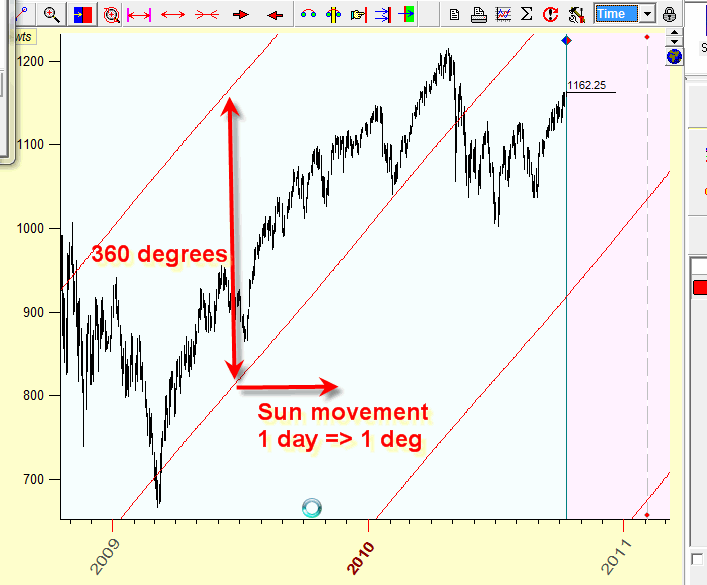
Planetary Lines module
Basic Explanation
Planetary Lines (PL) is a technique that is used to reveal support/resistance levesl. This technique is close to trend lines technique in Technical Analysis; the difference is that the main players here are the planets, the planetary movement allows to draw these lines.
Look at the Sun planetary line. Within one day, the Sun travels approximately 1 degree, it comes to 360 degrees within one year. When creating its planetary line, we assume that 1 degree of the Sun travel corresponds to $1 of price changes. On March 21st, when the Sun ingresses the first degree of Aries. these lines indicate these price levels: $0, $360, $720, $1080 etc. Thus we see here the bunch of planetary lines shifted on $360:

The same manner we can display the planetary lines for any planet or angle separation between two planets. This is a planetary line for Mercury:
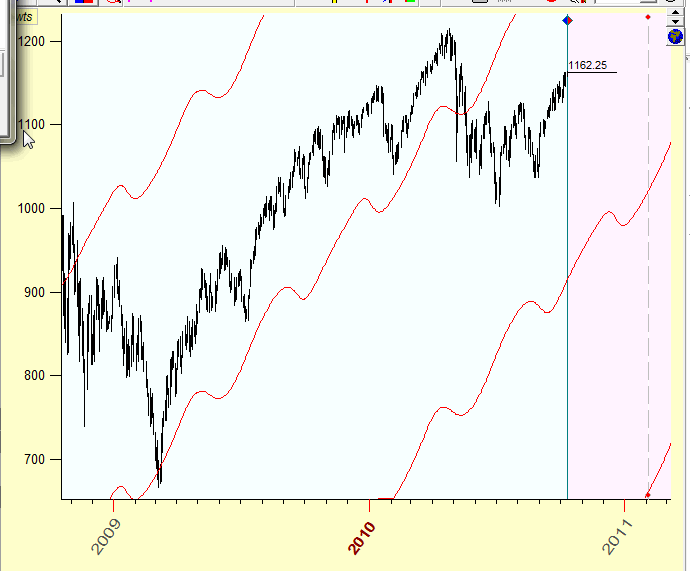
There are controls there that allow to choose the planetary combination. Scale is another very important parameter for planetary lines technique; in the example above we used a scale 1 degree=$1. If we consider Dow Jones index which varies now around 10,000, the more suitable scale is 1 degree=$10. Also it is better to use higher scale for slow planets:
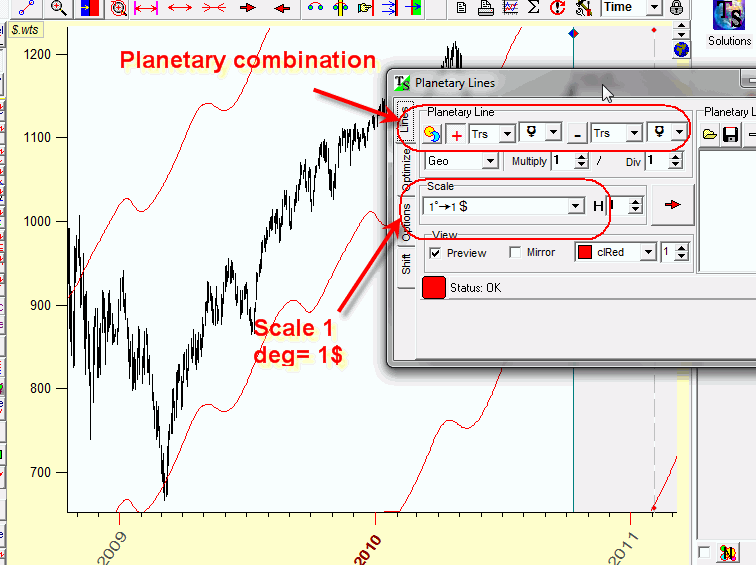
Harmonic number is one more important parameter. In the example above, to display the bunch of planetary lines the angle separation 360 degrees is used. We can vary this parameter; if you set Harmonic=2, the density of planetary lines will be 180 degrees ($180 in our example). Harmonic=3 corresponds to 120 degrees; here it is:
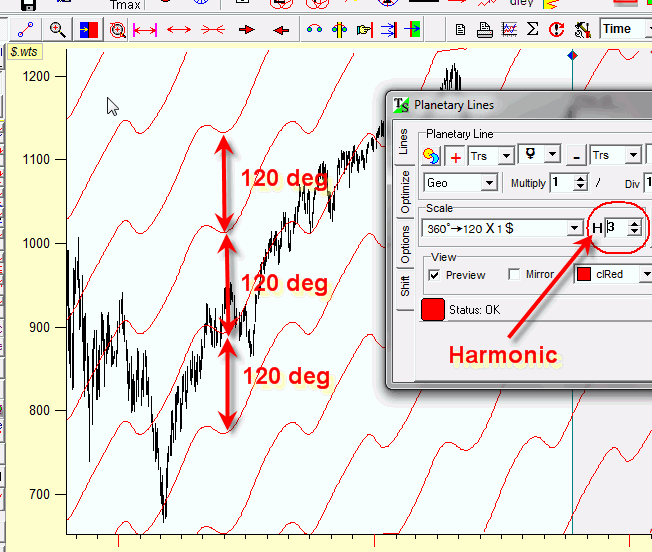
You can get more dense set of planetary lines using the smaller value of scale, like here:
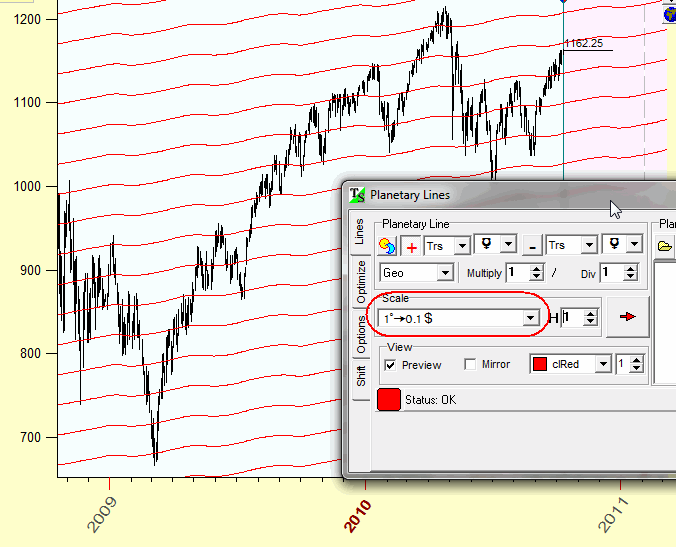
Here the planetary lines are separated by $36 price change.
You can display more advanced planetary lines, like 2 degrees of some planetary movement correspond to $3 of the price change. In order to do that choose "CUSTOM" scale:

You can also display a mirrored planetary line together with the primary line, set "Mirror" option ON:

You can calculate the planetary lines based on angle separation between two planets. Like to calculate the Mars-Jupiter planetary lines set these options:

Clicking this button you can calculate the planetary lines based on Mars/Jupiter midpoint:

Finally clicking this button you can put any planetary line into Planetary Lines Box and display several planetary lines together:
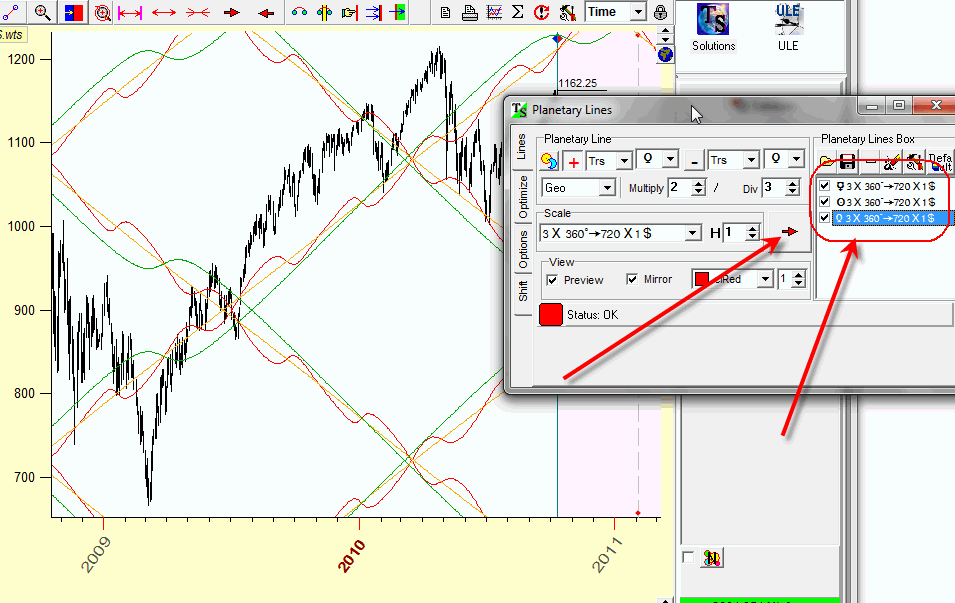
These buttons allow to save these lines into the file (and read them), to remove any line from the Planetary Line Box, set the color and thickness for any of these lines:
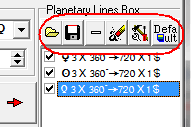
Optimization
The variety of planetary lines is tremendous, and we need some special procedure to analyze the big amount of planetary lines and find the best one/ones among them.
Let's do it together:
Follow "Optimize" tab:
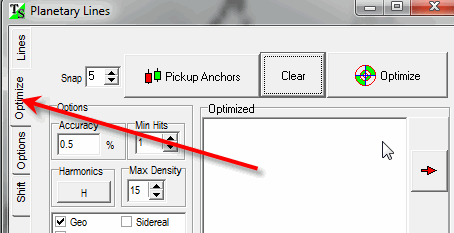
We need to define the anchor points on the price chart. The idea of this module is: we analyze a lot of planetary lines and pick up only those of them that hit our anchors. In other words, we recommend to set the anchors to the important price levels.
In order to do that, push "Pickup Anchors" button and click the mouse on the Main Screen around these important levels, like this:
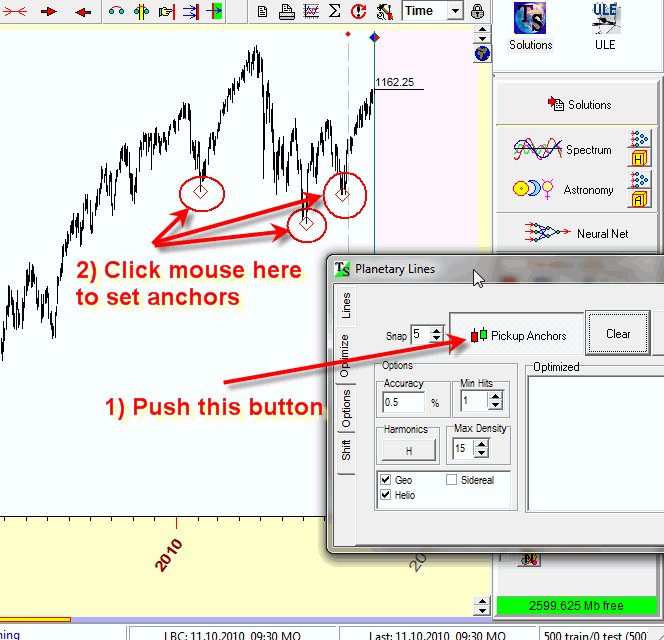
To pick up this point more accurately, try to decrease "snap"
parameter: ![]()
Next important parameter is "Min hits". in example below we are looking for the planetary lines that hit at least two anchors:
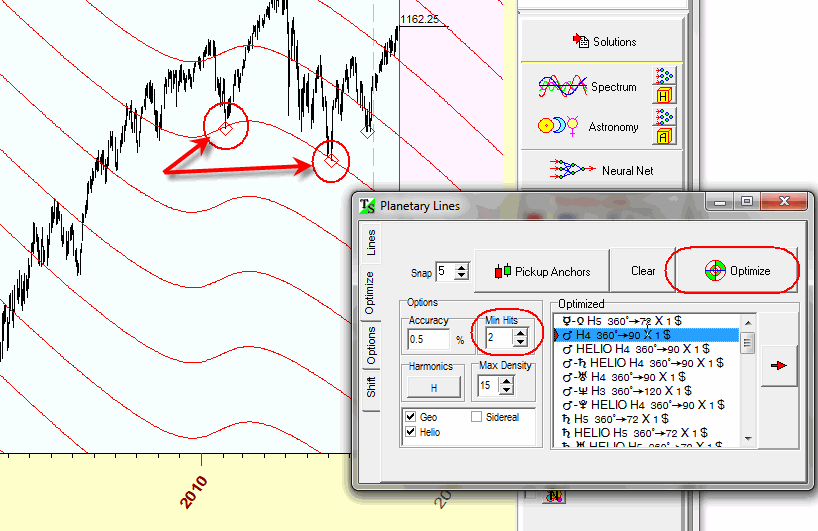
We can also look for planetary lines that hit at least one anchor or hit all
three anchors. The ![]() parameter shows how precisely our planetary lines hit our anchors. You can set it
to 0.1% to find more accurate planetary lines.
parameter shows how precisely our planetary lines hit our anchors. You can set it
to 0.1% to find more accurate planetary lines.
These parameters:

are used to set the Harmonics that are used for optimization, Zodiacs and maximal density for analyzed planetary lines. In our example, the parameter "Max. Density" set to 15 means that on your screen you do not prefer to see a bunch of 15 or more lines.
As a result we have a list of planetary lines that hit our anchors. By highlighting you can browse them one by one:
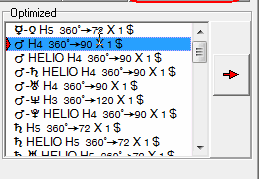
If you click this button:  ,
you send any of these planetary lines into Planetary Lines Box.
,
you send any of these planetary lines into Planetary Lines Box.